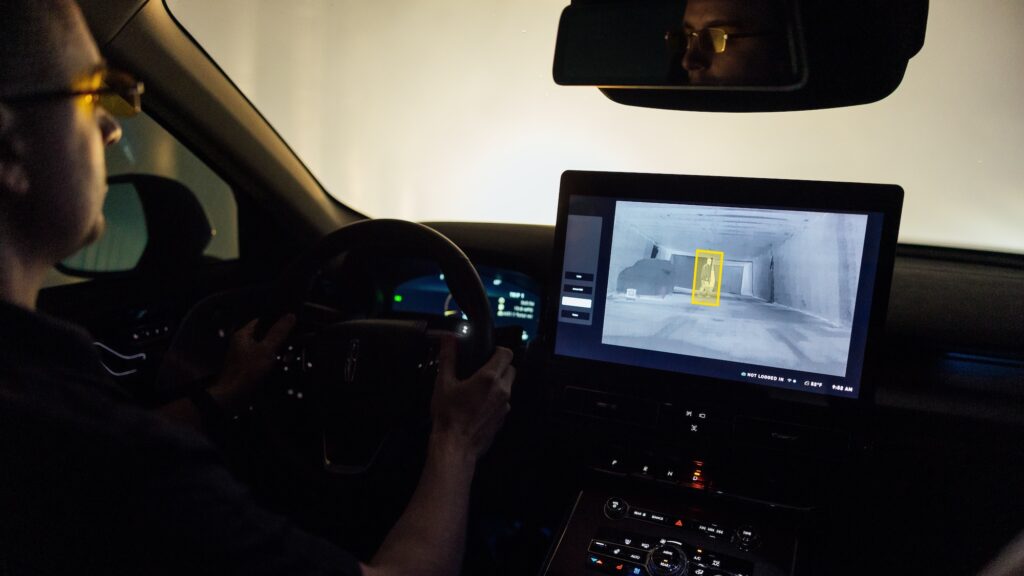Between 2019 and 2022, pedestrian fatalities caused by automobiles increased 19 percent. And according to AAA, three-quarters of pedestrian fatalities occur at night. Automotive technology supplier Magna is aggressively trying to change that by equipping 1.2 million vehicles with thermal technology.
Originally named “Night Vision” and introduced on the 2005 BMW 7 Series, Magna's heat-sensing product allows drivers to see the road up to four times farther than the range of a typical headlight. Currently available in 40 vehicle models from 13 manufacturers, including Bentley, BMW, Audi, Volkswagen, Porsche, Stellantis (Dodge, Fiat, Ram, Peugeot, Jeep, etc.) and GM, the technology was developed to reduce pedestrian and cyclist fatalities.
Here's how it works.
“Eyes” that see ahead by detecting heat
Microbolometers, or uncooled thermal sensors, began as military technology in the late 1970s. After the 1991 Gulf War, the US government declassified the technology and the use of thermal imaging was introduced to municipal fire services to help firefighters see through smoke. Before that, emergency personnel had to rely on touch and visual cues to evacuate each room individually, a time-consuming process.
Thermal cameras are becoming more and more popular in the security world: airports use them for perimeter defense and, during the SARS epidemic of 2002-2004, airports used them to take passengers' temperatures.
Magna's latest generation technology provides better road coverage and enhanced detection capabilities, giving drivers a clear image even in fog, smoke (a key factor for wildfire survivors), snowstorms or complete darkness. Because thermal cameras cannot “see” visible light, the system is not affected by glare from oncoming headlights or the sun, Magna says. As distracted driving becomes a growing problem, automakers and technology companies like Magna are actively pursuing solutions.
“Even during the day, smoke and fog can reduce visibility,” says Richard Seoan, vice president of operations and business development for Magna's Thermal Products division. “Divers heading into smoke may realize that what they think is only a short distance away is actually a mile long, as was the case two years ago when fog caused a 90-car pileup in California.”
How Magna Works
An infrared video camera is mounted on the front of the vehicle, detecting temperature differences of less than a tenth of a degree to create a detailed thermal image of the road, while software uses convolutional neural networks to create three-dimensional data for image classification and object recognition tasks.
The algorithm is then trained to classify those objects that are in the scope of the image, such as pedestrians, buses, or motorbikes. The system predicts the vector of movement and assists the driver in different ways, according to Seewan. For example, pedestrians don't move fast, but animals and motorbikes do. Knowing that information helps the driver assistance program adapt and adjust to avoid collisions.

“Our algorithms detect animals, pedestrians and cyclists more than 100 meters ahead of the vehicle and alert the driver to danger,” says Seoane, who explains that the algorithms can run on the car's own ECU (electronic control module) or be hosted on the manufacturer's central computer unit.
While the human eye cannot see the infrared spectrum, heat-sensing systems can, and Magna says the technology can distinguish between a mailbox, a deer and a person by detecting tiny differences in temperature.
Previous versions of the heat detection system were too big to fit in the trunk. Now, Magna's cameras are much smaller, about the size of a golf ball, with plans to make them even smaller. The company's next-generation heat detection technology is scheduled to debut next year, and will have a 360-degree field of view, meaning it can see more of its surroundings in the dark and can help with backing accidents, which are mostly caused by children and small pets. It will also be able to detect information up to three football fields wide, potentially extending stopping times and saving more lives.

